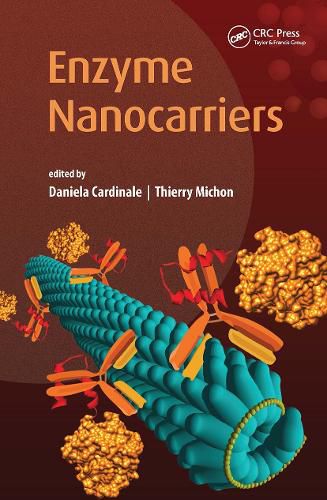Readings Newsletter
Become a Readings Member to make your shopping experience even easier.
Sign in or sign up for free!
You’re not far away from qualifying for FREE standard shipping within Australia
You’ve qualified for FREE standard shipping within Australia
The cart is loading…






Enzyme immobilization on solid supports has been considered for a long time as an attractive solution to perform sophisticated organic synthesis, which is required in the preparation of fine pharmaceutical chemicals. But in the late 1990s, the tremendous progress in molecular biology fundamentals opened up the possibility of feeding a toolbox for building new bioinspired nanotechnologies. Among them is the goal of repositioning biocatalysts in environments mimicking their genuine working place-the cell.
The research presented in this book was selected among the most impressive achievements in the fields of enzyme bioconjugation and bioinspired nanosupports. It opens up potential applications in nanocatalysis and for lab-on-a-chip and biosensor devices, drug delivery vectors, and nanometrology. Most of the supports described pertain to soft materials (cells, virus, polymers, DNA) and most of the examples benefit from the amazing properties of proteins and DNA to self-assemble, according to the bottom-up law, a specific feature of all living systems. The enzyme nanocarriers also have the potential to be grafted on solid supports through top-down technologies, spanning orders of magnitude from the nano- to the mesoscale and above. The book is a rich source of inspiration for researchers seeking to build smart materials requiring nanoscale positional control of functional proteins on various carriers.
$9.00 standard shipping within Australia
FREE standard shipping within Australia for orders over $100.00
Express & International shipping calculated at checkout
Enzyme immobilization on solid supports has been considered for a long time as an attractive solution to perform sophisticated organic synthesis, which is required in the preparation of fine pharmaceutical chemicals. But in the late 1990s, the tremendous progress in molecular biology fundamentals opened up the possibility of feeding a toolbox for building new bioinspired nanotechnologies. Among them is the goal of repositioning biocatalysts in environments mimicking their genuine working place-the cell.
The research presented in this book was selected among the most impressive achievements in the fields of enzyme bioconjugation and bioinspired nanosupports. It opens up potential applications in nanocatalysis and for lab-on-a-chip and biosensor devices, drug delivery vectors, and nanometrology. Most of the supports described pertain to soft materials (cells, virus, polymers, DNA) and most of the examples benefit from the amazing properties of proteins and DNA to self-assemble, according to the bottom-up law, a specific feature of all living systems. The enzyme nanocarriers also have the potential to be grafted on solid supports through top-down technologies, spanning orders of magnitude from the nano- to the mesoscale and above. The book is a rich source of inspiration for researchers seeking to build smart materials requiring nanoscale positional control of functional proteins on various carriers.